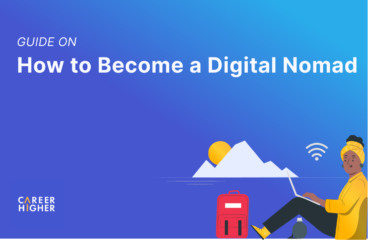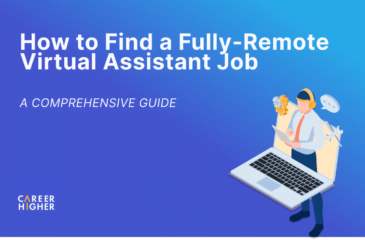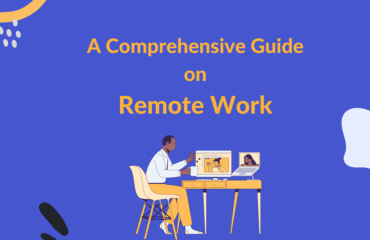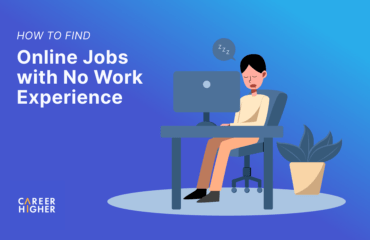Table of Contents
Today’s job market is highly competitive. So, as a candidate, it is essential to demonstrate that your experience and qualifications are perfectly aligned with the target role. To beat the competition, we suggest strongly advocating for yourself as a candidate. However, we understand this may be challenging in practice. To help you with this, we will discuss how you should advocate for yourself as a candidate in this article.
1) Identify target jobs
To advocate for yourself as a candidate, you need to start by identifying the right jobs for you. For this, you should have an understanding of the kind of jobs that align with your interests and experience. For instance, if you are a marketing professional, you can either choose to go for the same role that you held in your last job or you could research a bit and explore the new related roles. As a marketing professional, some other areas that you could target are digital marketing, email marketing, content marketing, market research, SEO, brand marketing, and more. Once you have clarity on the kind of roles you are targeting, you should look out for the right sources to find jobs. Some of these include:
a) Job search sites
Job search sites are one of the most popular sources of finding relevant jobs. These sites list various jobs based on function, location, or industry in one place, making it convenient for job seekers to find and apply for them. You can even find standalone websites dedicated to jobs in a specific domain or location. For example, job search sites for financial services, job search sites in Europe, remote job search sites, and more. Some common job search sites that you can use are:
- Indeed
- Reed
- TargetJobs
- WeWorkRemotely
- Careerbuilder
Social media platforms are another great source to look for job opportunities. Employers commonly use these to post job openings, company updates, and hiring information. As a job seeker, all you need to do is have a social media account on platforms like LinkedIn, Facebook, or Instagram and follow your target employer’s company page. In most cases, you can set up an alert notifying you of any recent addition in job vacancies.
c) Networking
Networking is an art that helps you build mutually benefiting relationships with people who can support your career goals. Networking with the right people helps you learn about new opportunities in your target companies and industries. In fact, if they are able to provide you with a referral, it gives you an upper hand. This allows you to gain a competitive advantage over other participants. Networking can be online or offline, depending on your target audience and professional goals.
2) Understand what employers are looking for
The next step is to understand what the employer is looking for. This should include two perspectives – job role and culture. While you need to demonstrate that you are capable of performing the role efficiently, you also need to convince them that you will adapt to their work environment and culture. Let’s talk about each below.
a) Job role
When it comes to the job role, you have to demonstrate your capability through your experience, expertise, and skills. For this, you should go through the job description thoroughly and make sure you address each responsibility in your resume or cover letter. This will allow the employers to understand your alignment with the role, taking you a step closer to landing the role.
b) Culture and work environment
Many organizations have now included behavioral and personality assessments in their initial rounds of screening. This is to avoid a mismatch between a candidate’s personality and personal values with the organization’s. Culture and work environment are key to a company’s overall success. So to ensure that they have chosen the right candidates, employers expect an alignment culturally too.
Some resources that you can use to know what an employer is looking for in their candidates are:
- Posts from the company’s social media pages
- ‘About Us’ pages on the company website
- Job advertisement
- Testimonials from current and ex-employees that you can find on company websites or external websites like Glassdoor
3) Identify relevant strengths to communicate
Once you know what your target employer is looking for, you need to showcase it to them by communicating effectively. However, before that, you should know which of your strengths and experiences are relevant for this role. This is where Candidate Value Proposition (CVP) comes into the picture. CVP is what a candidate can offer to their target employer. In other words, this answers how an employer can benefit from employing a particular candidate. You can learn more about this in the video below.
As a candidate, you should focus on demonstrating your achievements and passion for the job in your career documents. Additionally, while you may have a rich professional history, you will have to handpick relevant experiences and expertise to showcase. Sending a generalized resume or cover letter highlighting all of your achievements may not reflect the specific requirements of the job. This may result in your employers of choice moving to the next candidate, even when you are highly qualified for the role. Think about the value you can add with your experience, relevant hard and soft skills you equip, and your qualifications that are aligned with the job.
4) Demonstrate CVP in the hiring process
After you have identified everything you want to communicate, you need to convey it efficiently too. Now think about how you communicate with a prospective employer during a job search. Yes, it is your resume, cover letter, and LinkedIn profile that represent you to the employer. They communicate your ability to add value while demonstrating your fit with the company and the job role. Let’s have a look at some of the best practices below that should be adopted in your resume, cover letter, LinkedIn profile, and during the interview process.
a) Resume
In simple words, a resume conveys that you will be able to do the job efficiently to the prospective employer. To do this, leverage storytelling in your resume by combining it with data. Start by adding a Professional Summary section on top of your resume, highlighting your capabilities and expertise. Next, talk about your relevant experience in the Professional Experience section. We suggest using the STAR format to describe the Situation, Task, Action, and Results of all your roles and responsibilities. Furthermore, make sure you add all other relevant sections in your resume that align with your professional experience, such as Volunteering, Professional Certifications, or Additional Experience.
b) Cover letter
A cover letter is a complementary document that may not always be asked for by an employer. But we strongly recommend adding it to your application irrespective of whether it is asked or not. The purpose of a cover letter is to bring an employer’s attention to your application while communicating your interest, passion, and motivation for applying for the position. While writing your cover letter, focus on the employer’s specific needs, demonstrate a genuine interest in the role and the employer, and align the language with the company’s culture and business etiquette.
c) LinkedIn profile
Since LinkedIn is one of the most popular tools to find jobs these days, having a well-written LinkedIn profile can be a huge asset. It helps you network with the right people while additionally serving as an online resume. Use LinkedIn to tell your story. Update your headline, summary column, and experience section to allow others to know about your journey. Furthermore, use relevant keywords and the right tone of voice while making sure your profile is free of grammatical errors.
d) Interview process
Your interview is usually the first opportunity for you to advocate for yourself in person with a recruiter. While it won’t be a cakewalk, your efforts can help you fetch the desired results. In most cases, your preparation will depend on the interview type and stage. Yet, some general tips to keep in mind for interviews are:
- Do your research about the industry, company, hiring manager, and your target role
- Prepare questions to ask your interviewers
- Prepare well for interview FAQs, such as, ‘tell us something about yourself’ or ‘where do you see yourself in X years’
- Dress smart
- Make sure you submit/carry all the necessary documents
- Send a thank-you note after the interview to the interviewers
Advocating for yourself as a candidate can be challenging. However, it is key for moving to the next stage in the hiring process. We encourage you to follow the above tips and reach out to us if you need any more support with your job search.











